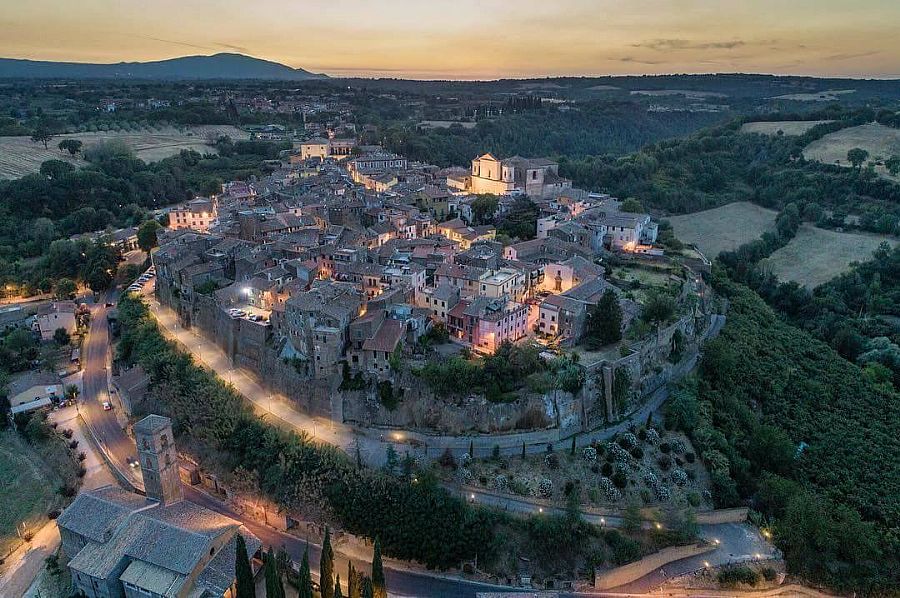Gallese

A city of ancient origins in the area of Viterbo, Gallese is built on a tufa bluff with the sheer walls dropping to the river valley below. The ancient Falisci people lived here, (Falisci means inhabitants of Falerii, now the town of Civita Castellana). They were contemporaries of, and closely tied to, the Etruscans who lived in the same area. From around 500 BC, they allied together against Rome. The mighty powers of Rome took over, though and the city of Gallese gained importance. It was located along the Via Amerina and Via Tiburtina, as well as on the Rio Maggiore river.
It became even more prestigious in the Byzantine period, on the thoroughfare that connected Rome to Ravenna. After the Middle Ages, Gallese saw the construction of palazzi by noble families from Rome, the noted Orsini, Colonna, della Rovere, and Carafa. In 1579, the Altemps family converted the fortress-like castle into a palace, the Palazzo Ducale still stands here.
While the area had seen ceramics manufacture during the Falisci period, those created here now are not of the fanciful vases and dishware of the past; today, they're known for the bath fixtures and basins produced here in the industrial zone.
The town is perfectly lovely, and interesting. The old town is still walled with its two city gates. Stroll the cobbled lanes and take it all in - an atmosphere steeped in history and stopped in time. They pay homage to the patron saint, San Famiano, every August 8 with a big party. The saint died here in 1150.
Don't miss the cathedral dedicated to Santa Maria Assunta, and the basilica dedicated to San Famiano. And of course, a must-see is the castle, the Palazzo Ducale.
Ask our staff about self-catering homes in Rome and Latium.

 Amalfi Coast
Amalfi Coast Sorrento Coast
Sorrento Coast Tuscany
Tuscany Cilento National Park
Cilento National Park Lake Como
Lake Como Rome and Latium
Rome and Latium Umbria
Umbria Capri and Ischia
Capri and Ischia Venice
Venice Puglia (Apulia)
Puglia (Apulia) Liguria
Liguria Sicily
Sicily Lake Maggiore
Lake Maggiore Lombardy
Lombardy Sardinia
Sardinia Lake Garda
Lake Garda Abruzzo and Marche
Abruzzo and Marche Calabria
Calabria

